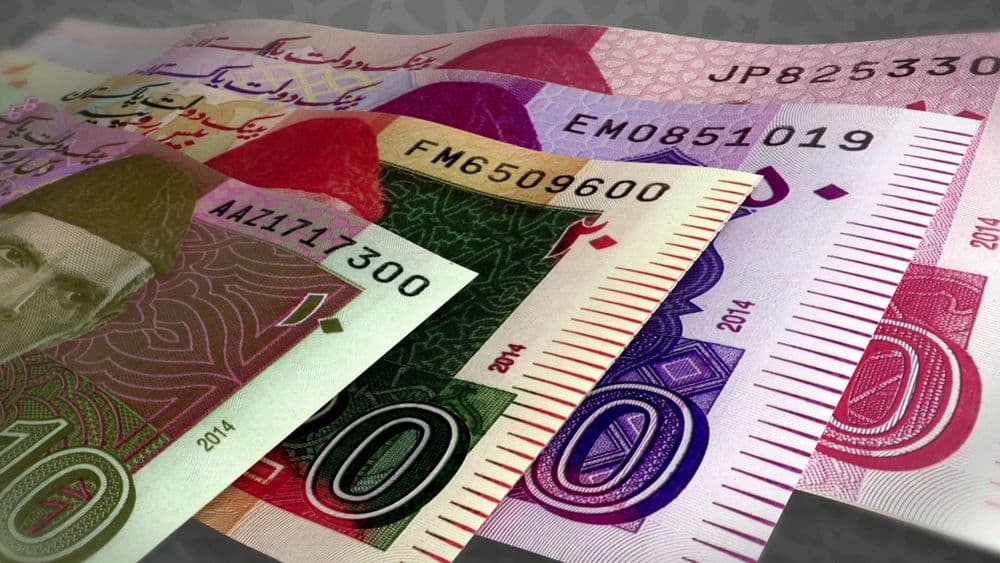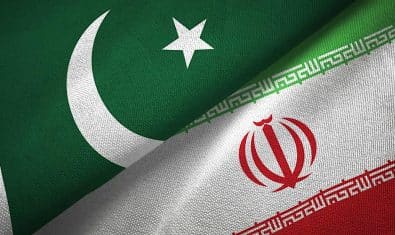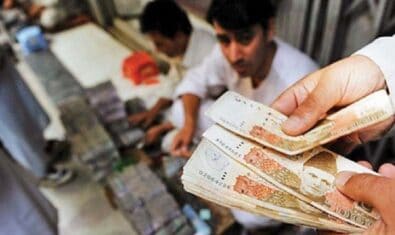Despite the increasing use of plastic money (credit/debit cards) in Pakistan, the usage of cash has increased among the public which costs the State Bank of Pakistan (SBP) heavily. SBP needs to print additional currency notes to cover for this need. This caused it a heavy expense of Rs. 9.1 billion in the outgoing financial year.
According to SBP’s statistics, the expense of printing of currency notes increased to Rs. 9.128 billion in FY17 from Rs. 7.731 billion in FY16, thereby registering an increase of 18 percent or Rs. 1.39 billion in just one year.
The increase in expense is largely attributed to a surge in the quantity of banknotes printed at the cost of Rs. 1.295 billion and partly due to price escalation of the instruments (paper, ink and etc.) at the expense of Rs. 139 million.
The printing of currency notes are carried out time to time on the basis of demand but it is done on a large scale on the occasion of Eid-ul-Fitr.
This year, the central bank distributed Rs. 342 billion in new currency notes among the public, which ultimately circulated in the financial and economic system. The amount is Rs. 105 billion higher than previous year.
Factors OF Higher Expenditure
The demand of currency notes was pushed by the GDP growth which led to an increase in the amount of currency in circulation to Rs. 3.7 trillion by June 2017.
Of course, the higher demand of currency notes push the central bank to print more money but it usually does not happen in most of the countries where advanced modes of transactions are used such as internet and mobile banking.
The use of internet and mobile banking has been on the rise in Pakistan, also showing a double digital growth in transactions and its values in outgoing financial year. During the period, internet banking processed transactions amounting to Rs. 968 billion and mobile banking processed transactions of Rs. 141 billion.
However, the share of internet banking is not more than 3 percent in the overall transactions made during FY17. Mobile banking’s share is less than one percent despite a gradual increase in userbases.
The higher withholding tax on banking transactions has had an adverse impact on the currency in circulation, which paved the way towards a higher demand of currency notes in the banking and economic system.
Since the imposition of higher withholding tax by the government (up to 0.6 percent on above Rs. 50,000 transactions) people, including small traders, hold their cash in large amounts to meet their demands of sales and purchase. This way, they avoid transactions (through banks) of more than Rs. 50,000 in a day and avoid taxes too.
Previously, they used to keep their cash in their bank and had comparatively frequent transactions.
A recent report from SBP said,
While the withholding tax on non-cash banking transactions seems to have had a negligible impact on revenue collections and incentivizing tax filing, it instead led to an increase in currency in circulation and a decline in private business deposits, according to a study by State Bank of Pakistan (SBP) published in its annual report “The State of Pakistan’s Economy”.
Currency in circulation grew by 21.5 percent on average during July 2015 to June 2017 against an average growth of 14.0 percent recorded in the past 11 years, prior to the new tax’s imposition that is, between July 2004 to June 2015, it said.
According to a similar report, withholding tax caused more harms than benefit in the banking and economic system.
SBP’s Efforts For Overcoming This Issue
The need of the hour is to capitalize on technological innovations to develop products that suit the market needs and enhance customer facilitation.
The initiation of projects by the central bank, like development of National Payment Gateway, online collection of taxes and duties and elimination of cheques from government payments, will have far reaching implications on banking system efficiency, effectiveness and access.
Similarly, the initiation of domestic payment schemes would complement SBP’s efforts to promote e-payments in the country.
SBP, along with banks, should promote the use of electronic and digital payments through education and incentive campaigns and tightening security features of the system.
The government should also review its policy on withholding tax on banking transactions and generate taxes from various potential areas that will not cause an adverse impact on the economy.



























گورنمنٹ کو چاہئے کرپٹو کرنسی کو اپنا لے
This withholding tax is a curse and stupidest decision in this era. Everybody hate to make transactions through banking channel. A trader who will keep around 1% profit for a deal of 2m would like to avoid the stupid s#it 0.6% just to save the small margin. Even a middle class man hate to withdraw money over 50k just to avoid paying this insane tax.
Now, all of this 9 billion expense to get some margin of withholding tax which is even recoverable for taxable individuals/corps not to mention the indirect harm done to the overall banking sector and economy.
Central banks make a profit from the currency notes they print. The article should mention that very important point.
Of course they’d make even more profit if the money was electronic and they didn’t have to spend anything on printing notes.